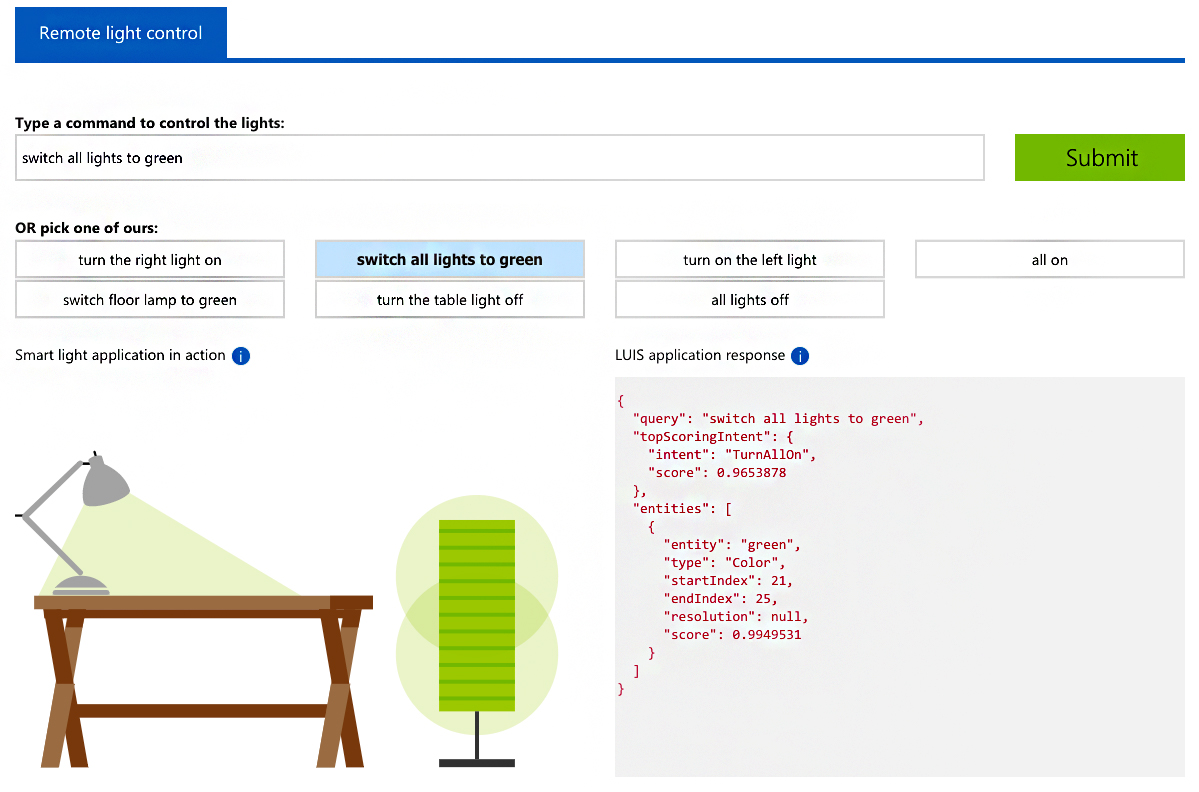In my last post, I introduced Microsoft Azure’s Cognitive Services suite and its potential to make mobile apps smarter, more engaging, and more contextually relevant for users. I highlighted 3 APIs out of the many that are offered: Custom Decision Service, Content Moderator, and the Speaker Recognition API.
A driving point behind my last article was that users now expect a higher standard of experience from mobile apps. Users want effortless interaction; experiences that are catered to them; and apps that understand intent with less input and fewer taps. In other words, your customers want apps that are smart. Due to advances in artificial intelligence, big data, and machine learning, this is becoming more easily possible.
This time, I will be focusing on Microsoft Azure’s Cognitive Services Language and Knowledge APIs in relation to chatbots and automated customer service in mobile apps. Specifically, I will be discussing the Language Understanding Intelligent Service and the QnA Maker API, and how they can be used together to enhance your mobile app.
Image by Sabrina Chowdhury via Flickr
Chatbots and Human-Machine Interactions In Mobile Apps
Before I dive into Cognitive Services, I want to give context on why chatbots and human-machine interaction are important for building smarter, more engaging mobile apps.
First, usage of messaging apps has surpassed usage of social media apps. Messaging apps like WhatsApp are exhibiting some of the highest growth of any app category. Your customers are already familiar and engaged with this medium. And many prefer to interact with your business this way – 45% of consumers claim they would rather use messaging than email to contact a business, and almost 50% preferring messaging over phone (Ubisend’s 2016 Mobile Messaging Report). Offering a channel for them to interact with your brand in a way they prefer is only logical.
Second, the adoption rate for chatbots is already high. In fact, a survey by BI Intelligence found that almost 60% of users between the ages of 18 and 55 have used chatbots.
Third, the nature of mobile apps invites immediacy. Users have access anytime, from anywhere. They want to be able to do things when they want. It’s no surprise then that Ubisend’s 2016 Mobile Messaging Report found that 51% customers think businesses should be available 24/7.
The case for chatbots is clear. Your customers want to use messaging to interact with your business, and they want communication lines open 24/7. With human operators, this is highly-labor intensive, expensive, and often impractical. Human-computer interaction via chatbots is a promising solution.
However, there is a right way to do things. As Octane AI CEO Matt Schlicht points out, chatbots that function based on AI and machine learning are far more sophisticated than those based on rules, able to understand language and get smarter based on the conversations they have. Today, rule-based chatbots simply don’t offer the experience users expect. Chatbots need to be intelligent.
This is where Azure’s Language Understanding Intelligent Service and QnA Maker come into play.
What is the Language Understanding Intelligent Service?
The Language Understanding Intelligent Service (LUIS) works to help your mobile app or bot understand the intent behind user actions and commands in order to provide the right response. It allows you to develop your own language models and also comes with a number of pre-built language models that can be implemented directly. Like other Cognitive Services, LUIS learns and improves as it receives more data, meaning it becomes smarter with more interactions. Here is an example of how LUIS works:
What is the QnA Maker API?
The QnA Maker API crawls your content and creates FAQs. It extracts all the data from a variety of sources – editorial content, comments, documents, FAQ URLs – and pairs potential questions and answers. You can publish the FAQs as an endpoint via an API that is provided.
How To Use The Two Together
The combination of the two allows you to provide a smart chatbot within your app. When a user asks a question or makes an inquiry, LUIS will parse what is being asked in the chat and can answer it based on the content generated by the QnA maker.
In its simplest form, using these together allows you to create a chatbot that can answer FAQs directly, without users having to search around for the information. If you wanted to add something more complex, like a comprehensive interactive user guide, that option is also available – albeit more complicated to implement.
By leveraging AI and machine learning, these two services function together to provide your users with a smart chatbot that learns and becomes better at responding with every interaction. There is huge potential here to give your users what they want: a more intelligent, more engaging experience that understands their intent.
Closing Thoughts
Smart apps are the future. Users now expect their experiences to be more engaging, personalized, and effortless. One increasingly popular method for doing this is via smart chatbots. Microsoft Azure’s Cognitive Services – specifically Language Understanding Intelligent Services and QnA Maker – allow developers to make their apps more intelligent by leveraging AI and machine learning to provide human-machine communication that learns with every conversation.
The potential for improving the user experience in mobile apps is limitless; users can interact with your product, find what they are looking for, or perform actions more quickly, simply by asking questions or making commands. As your customers demand more intelligent apps and streamlined experiences, these services present an opportunity to meet and exceed user expectations.
To learn more about leveraging Cognitive Services to make your mobile app smarter and more engaging, contact Clearbridge Mobile today.






